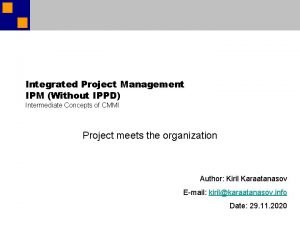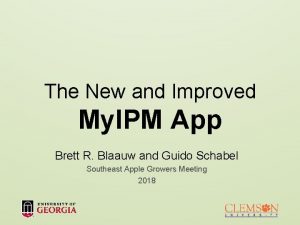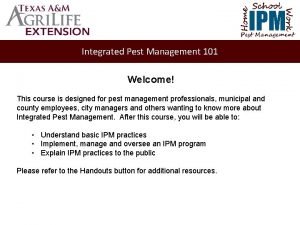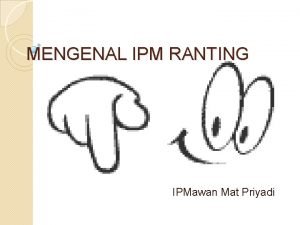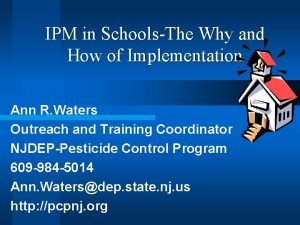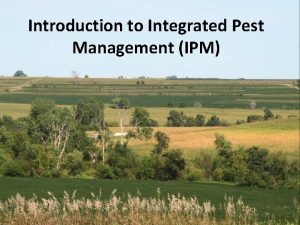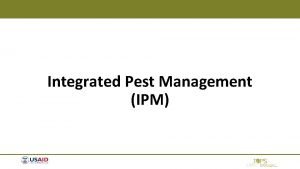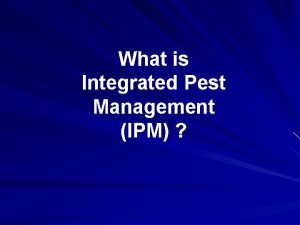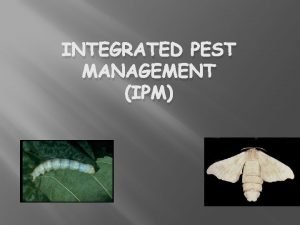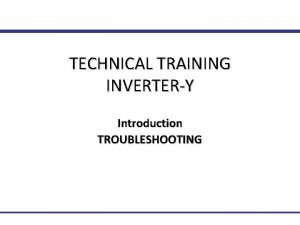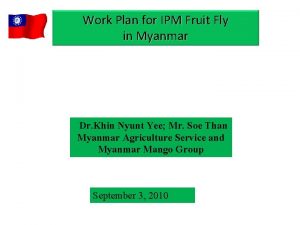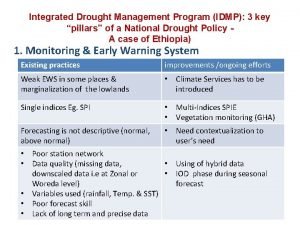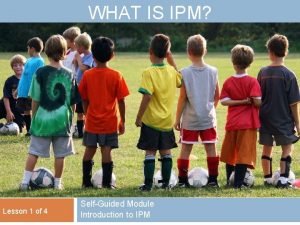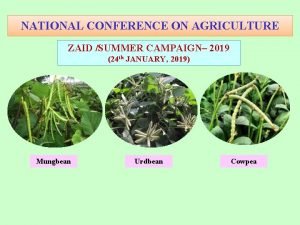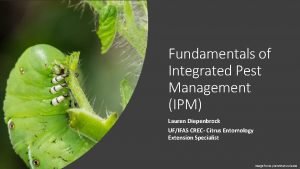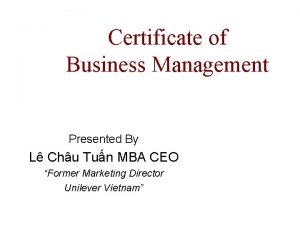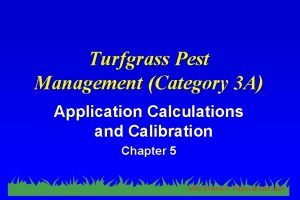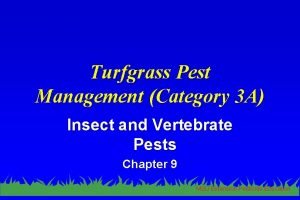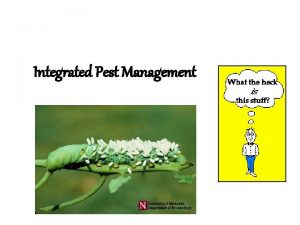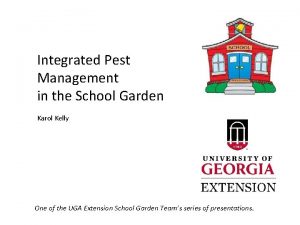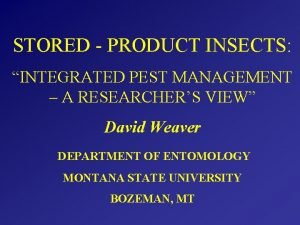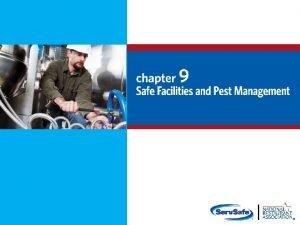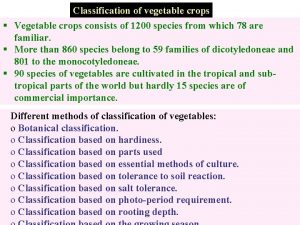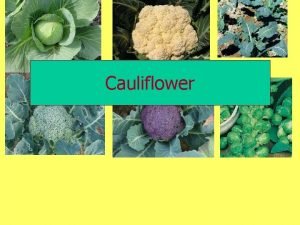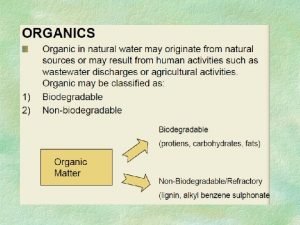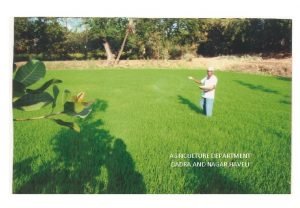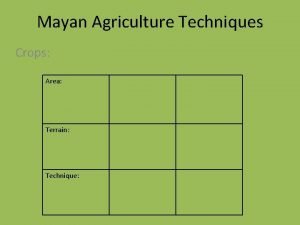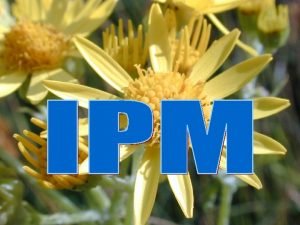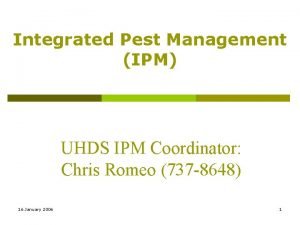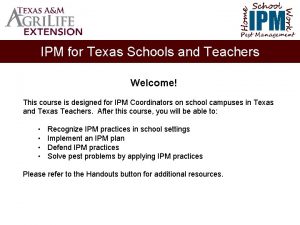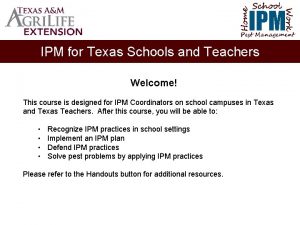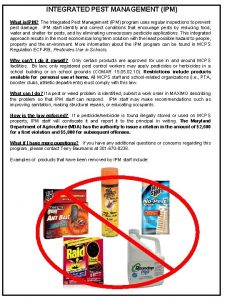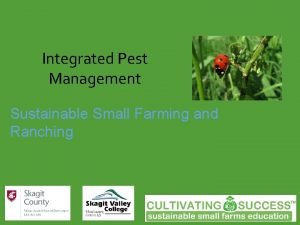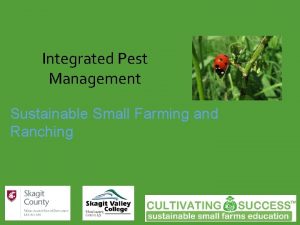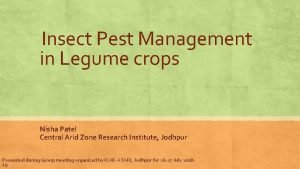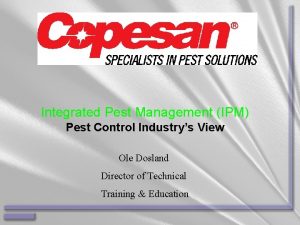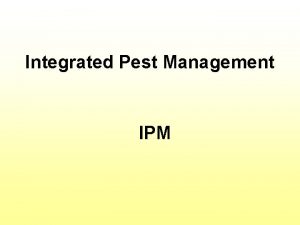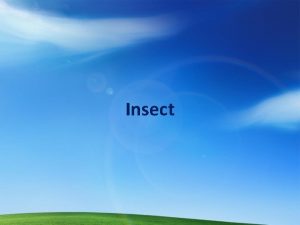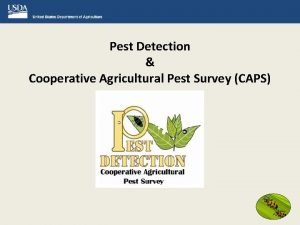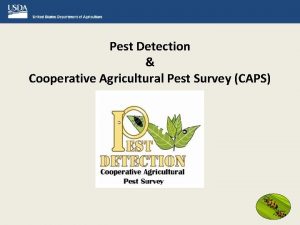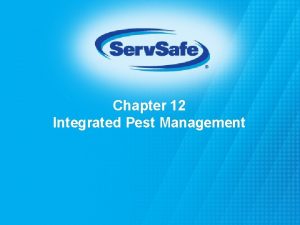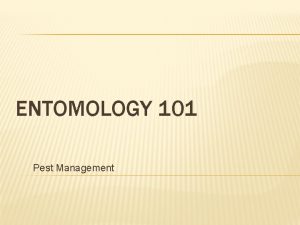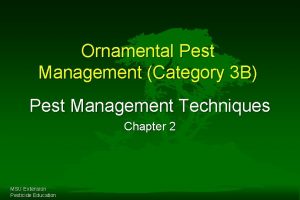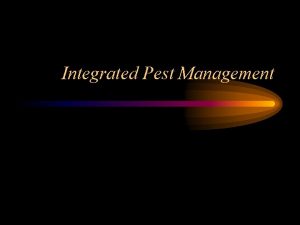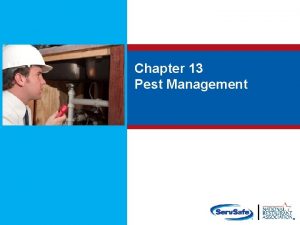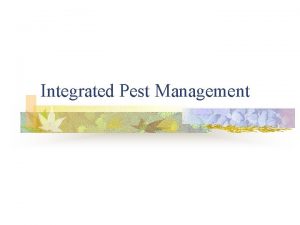IPM Insect Pest Management for specialty crops pitahaya












































- Slides: 44

IPM & Insect Pest Management for specialty crops (pitahaya) Anna D. Howell UCCE Ventura Co.

Successful Management To successfully control pests, you need a good Integrated Pest Management (IPM) Program

Integrated Pest Management (IPM) • An ecosystem-based strategy that focuses on long-term prevention / suppression of pests or their damage through a combination of control strategies Physical Cultural IPM Chemical Biological

Integrated Pest Management (IPM) • Will keep pests at tolerable levels with minimum impact on human health, the environment & non target organisms (beneficials)

Key components of IPM Learn Review Control decision Prevent Monitor

Learn: Understand key pests & crop lifecycle Learn Review Control decision Prevent Monitor

Learn: Understand key pests & crop lifecycle Learn Review Control decision Prevent Monitor Prevent: Through good planning (site selection, variety, crop rotation, site hygiene, optimum production time


Learn: Understand key pests & crop lifecycle Learn Review Control decision Prevent Monitor Prevent: Through good planning (site selection, variety, crop rotation, site hygiene, optimum production time Monitor: For pests (weeds, insects, diseases), beneficials. Use all available monitoring tools

Use direct or indirect sampling methods • Sample plants • Sticky cards, double sided tape, pheromone traps/lures • Sweeps • Sample weeds in perimeter UCANR

Develop a monitoring program:

Learn: Understand key pests & crop lifecycle Learn Review Control decision Control Decision: What is the most appropriate action for crop stage, pest stage & pressure. Chemical, biological. Prevent Monitor Prevent: Through good planning (site selection, variety, crop rotation, site hygiene, optimum production time Monitor: For pests (weeds, insects, diseases), beneficials. Use all available monitoring tools

• Some sprays can disrupt biological control. Only treat if necessary. • Treat at the correct life stage VS.

Learn: Understand key pests & crop lifecycle Learn Review: Crop records, yields, damage against management decisions, pest patterns Review Control decision Control Decision: What is the most appropriate action for crop stage, pest stage & pressure. Chemical, biological. Prevent Monitor Prevent: Through good planning (site selection, variety, crop rotation, site hygiene, optimum production time Monitor: For pests (weeds, insects, diseases), beneficials. Use all available monitoring tools

Pitahaya has little pest problems compared to other major economic crops…but are not pest free

Reported Pest • • • Mites Thrips Ants Beetles Borers (Diatrea) Hemiptera (many) Fruit flies Moths Slugs Examiner. com Ray Alvarez

Common Pests

Ants • Honeydew feeding ants like Argentine ants • Feed on sap from the fruit & may cause blemishing • Associated with honeydew secreting scale WA. gov

Management • Boric acid bait stations • Sweet bait to attract honeydew feeding ants

Management • Boric acid bait stations • Make sure to get your ants ID’d for proper management • Don’t let then dry out • Always have bait available & clean out traps • Your environmental conditions will determine how often you refill them

Aphids • Piercing-sucking mouthparts • Weakens the plant, can scar the fruit • Produce honeydew – Attracts ants Protect aphids – Sooty mold Jose De. Soto

Western leaf-footed bug (Hemiptera) • Leptoglossus zonatus (Coreidea) 2 yellow spots behind the head

• Piercing-sucking mouthparts • Causes blemishes on fruit • Most destructive. Feed on weeds in the spring then move into gardens/fields • Numerous hosts, including tomato, pomegranate, eggplant

• Suspected of transmitting fungal and bacterial diseases • Eggs are laid on the host plant, end-to-end • Overwinter as adults. Can be seen in clusters in the fall

Management • Remove weeds that may serve as host plants (sanitation!) • Build up natural enemies – Avoid using broad spectrum insecticides • Neem oil / insecticidal soaps on nymphs – Adults are harder to control

Scale Insects Red Scale Brown Scale Armored Scale • ‘Scale’ can be separated from body, with distinct nipple • Produce no honeydew • Inject toxin into plants Soft Scale • ‘Scale’ is part of body, can’t be separated • Smooth, cottony, waxy covering • Produce honeydew

• Piercing-sucking mouthparts • Weakens the plant • Honeydew producers attracts ants – Ants will protect scale insects from natural enemies

Management • Horticultural oils or soaps • If chemically treating, timing is crucial • Manage ants so natural enemies can control scale • Crawlers are easier to manage

Mealybugs • Piercing-sucking mouthparts – In high populations, can slow growth & cause die-back • Small soft-bodies insects (0. 05 -0. 2”) • Have a waxy covering with filaments around the body • Secrete honeydew – Sooty mold – Ants


Management • Waxy coating protects them from insecticides – Insecticidal soaps or petroleum oils can break it down • Neem oil • Pyrethrins • Manage ants for natural enemies

Cactus Moth • Cactoblastis cactorum • Larvae have chewing mouthparts – Burrow into the plant and eat the insides • From S. America – Introduced in Australia as a control for Opuntia sp. • Also found in California, Arizona, Nevada, Texas, and New Mexico

• “Snout” moths (Family: Pyralidae) • Adult wingspan is 1 – 1. 3” • Species identified by looking at male genitalia




Management • Horticultural oils or insecticidal soaps on small larvae • Spinosads • Bt for the larvae of Leps • Pheromone traps/lures

Spotted Wing Drosophila • Small vinegar flies (1/8 - 1/16”) • Males have I dark spot at the ends of each wing • Females have a serrated ovipositor

Damage • Attacks ripening healthy fruit before harvest • Larvae feed on the inside causing it to become mushy and brown on the outside • Can also cause secondary infections • Fruit with maggots inside is hard to sell


Monitoring • Apple cider vinegar traps • Check traps weekly & change out every 23 weeks

Management • No biological control (so far) • Organic methods: Spinosads – Oils do not work • Conventional: See UCIPM website for chemical control • Timing is crucial. Need to get adults. Multiple sprays may be required

Prevention • • Sanitation is key to prevention Harvest old fruit Do Not throw old/bad fruit on the floor Keep your fields clean of rotting or overripe fruit. • Sanitation can decrease populations substantially!!

Thank you!
 Cmmi ipm
Cmmi ipm Specialty asset management
Specialty asset management My ipm
My ipm Sertifikat kompetensi insinyur profesional
Sertifikat kompetensi insinyur profesional Cultural ipm
Cultural ipm Ipm adalah
Ipm adalah What is an ipm plan
What is an ipm plan Ipm meaning
Ipm meaning Ipm
Ipm Integrated pest management objectives
Integrated pest management objectives Ipc pest control
Ipc pest control Ipm error/ igbt error daikin
Ipm error/ igbt error daikin Ipm myanmar
Ipm myanmar Pillars of ipm
Pillars of ipm Ipm grade 1
Ipm grade 1 Ipm indeks pembangunan manusia
Ipm indeks pembangunan manusia Ipm 410-3 (shikha) price
Ipm 410-3 (shikha) price Integrated planning model
Integrated planning model Ipm
Ipm Ipm pipe
Ipm pipe Ipm tuyển dụng
Ipm tuyển dụng Turfgrass pest management (category 3a practice test)
Turfgrass pest management (category 3a practice test) Electric dhaver
Electric dhaver Turfgrass pest management
Turfgrass pest management Integrated pest management
Integrated pest management Biological control
Biological control Integrated pest management ____ than pesticides.
Integrated pest management ____ than pesticides. What is the third step in integrated pest management?
What is the third step in integrated pest management? Safe facilities and pest management
Safe facilities and pest management What is capital city of greece
What is capital city of greece What type of food did the iroquois eat
What type of food did the iroquois eat Name root vegetables
Name root vegetables Physiological maturity and horticultural maturity
Physiological maturity and horticultural maturity What crops did ancient egypt grow
What crops did ancient egypt grow Classes of vegetable
Classes of vegetable Value added products of cauliflower
Value added products of cauliflower My crops doing well
My crops doing well Pictures of food crops
Pictures of food crops Genetically modified crops
Genetically modified crops Crops
Crops Irrigation projects in dadra & nagar haveli
Irrigation projects in dadra & nagar haveli 1. from where does kat recognize the girl with red hair?
1. from where does kat recognize the girl with red hair? North central plains map
North central plains map Mayan agricultural techniques
Mayan agricultural techniques Mexican crops
Mexican crops
